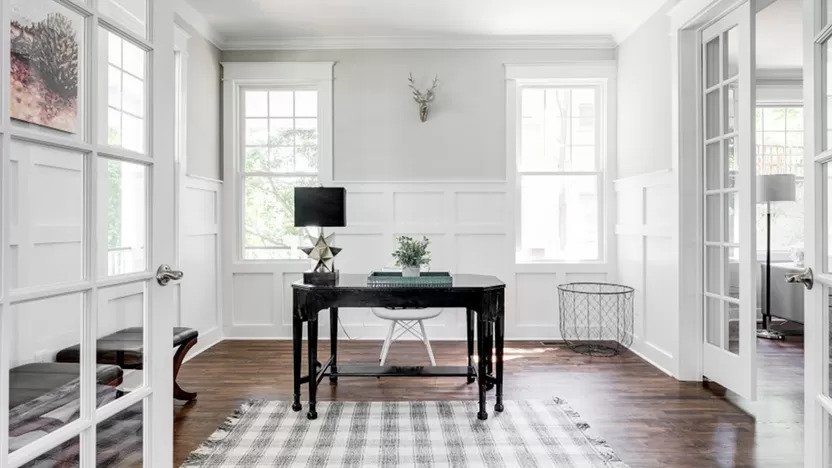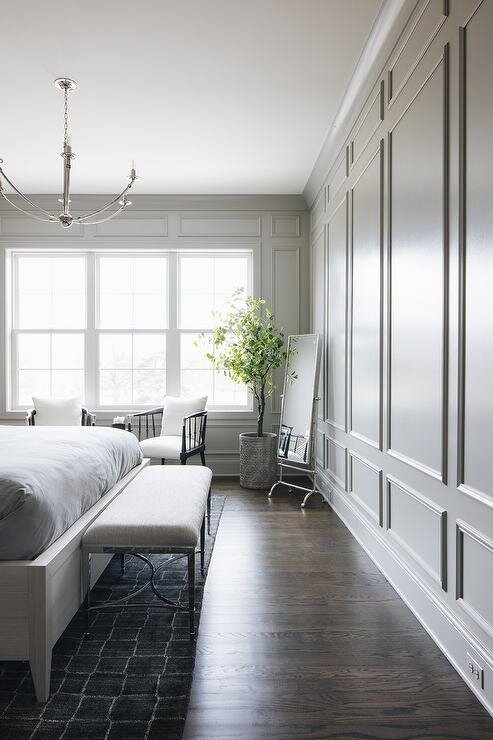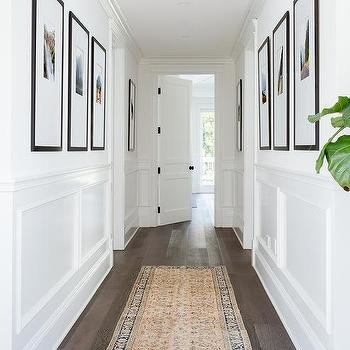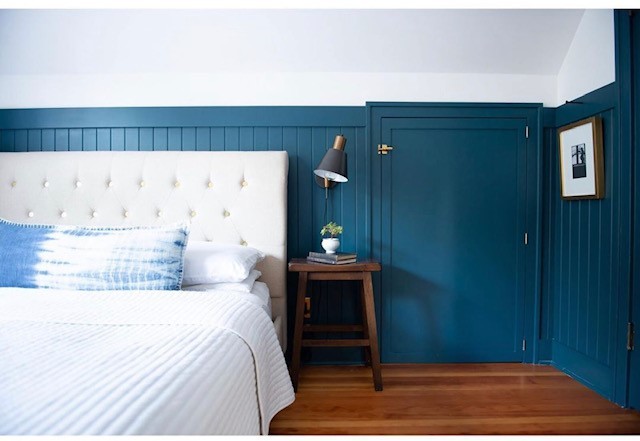
Many homeowners and interior designers appreciate wood trim, as it makes any room look a little more buttoned up. Wainscoting is a decorative wall trim that’s centuries old and has never gone out of style, likely due to its versatility—there’s a type of panel that suits just about every design style.
Here are some details on where the heck this trend came from, and (more importantly) the many ways wainscoting can be used to boost your home’s interior appeal.
What to know about wainscoting
Wainscoting came into use in the 18th century, as a wall covering, applied to the lower third of the wall. It’s similar to chair rail—a less opulent form of wood trim that was placed “chair height” along all the walls of a dining room to protect the walls from chairs bumping into them—in that it started out as a way to protect walls. Walls were made of plaster by this time, and plaster was relatively expensive to repair. While a thin strip of chair rail did the trick, wainscoting covers much more of the wall than chair rail, so it has a secondary benefit in that it’s a good way to insulate a room.
These days, wainscoting main use is as a decorative molding that helps make a room more visually appealing. It still typically rises to just chair-rail height (though some take it as high as shoulder height), but while historically wainscoting was made from wood, today’s wall panels can be manufactured from a variety of materials, says Dayna Hairston, owner and interior designer at Dayziner, in Cary, NC. Other materials include PVC plastic, embossed metal, and molded drywall—any of which can add texture and style to a room.
chair-rail height (though some take it as high as shoulder height), but while historically wainscoting was made from wood, today’s wall panels can be manufactured from a variety of materials, says Dayna Hairston, owner and interior designer at Dayziner, in Cary, NC. Other materials include PVC plastic, embossed metal, and molded drywall—any of which can add texture and style to a room.
The height of this detail can vary depending on your rooms’ designs and the look you are trying to achieve.
According to Barbara Mount of Barbara Mount Designs and Windermere Realty Group, in Lake Oswego, OR, wainscoting that goes up as high as 5 feet or more has more impact. It can be taken up well beyond chair-rail height—leaving just the top 2 feet for paint or accent wallpaper.
Wainscoting comes in a wide variety of materials
Today’s wainscoting designs run the gamut of wood products. Depending on the value of the home, some contractors will use medium-density fiberboard, an engineered product also known as pressed wood—a fine, cost-effective choice for any room except for kitchens and bathrooms, says Mount. A steamy bathroom can cause fiberboard to expand over time, and the product will start to ripple and bloat.
“If you want this paneling element in a bathroom or kitchen, use real wood because it will hold up to spatters and spills,” she adds.
Another choice in bathrooms and other areas prone to moisture is wainscoting made from ceramic tile, which appeals because it is nonporous and easy to clean.
If you’re going for that shabby chic, rustic farmhouse look in a kitchen or den, you might want to consider beadboard wainscoting, which is historically made from a series of thin, vertical wood planks separated by a strip of wood “bead.”
Another option you can choose is shiplap, which is horizontally installed interlocking planks that are several times wider than beadboard.
“While white shiplap has been on-trend, painted shiplap can give a room a country feel,” says Nikki James, studio manager for Ashton Woods, a homebuilding company in Dallas. Those looking for a more traditional look would be happier with full wood panels.
Wainscoting is a versatile trim for many rooms
Traditional wainscot designs—whether the wood is painted, left natural, or stained—can add sophisticated trim, with either straight or beveled edges, to a living room, dining room, or study.
Mount’s favorite uses for this panel treatment are in an entryway and along stair walls, as these spaces typically lack architectural interest.
James loves to put wainscoting panels or beadboard designs in a powder room.
“Most of your guests will see this room during their visit.” she says.
To achieve a less formal look, Hairston recommends painting wainscoting panels an accent color rather than the conventional white.
The one look to avoid? Installing wainscoting all the way up to the ceiling for a full wall of brown paneling, which is too reminiscent of the ’70s-era rec room, say experts. If you’re dying to install trim near the ceiling, consider crown molding.
Is wainscoting expensive?
Wainscoting is a valuable investment from a design standpoint as it can add value and warmth to your space. That said, the cost of this wall treatment can vary greatly depending on the material it’s made from, the type and size of panel used, the height (whether to chair-rail level or higher), room size, as well as local market supply-chain availability..
“The average price of wainscoting is $1,325, or about $5.50 per square foot,” according to recent data by HomeAdvisor. “Expect to pay $1,050 to $1,600 including materials and labor to install 5-foot-high unpainted solid wood wainscoting in a 12-by-12-foot room.”
“Installing wainscot paneling can certainly be done as a DIY project, provided the user is skilled in precise measurements and knows their way around a chop saw,” Hairston says. However, typically she will recommend you call on a skilled carpenter to install it. She recommends sourcing a local installer from the National Association of the Remodeling Industry site.
Article by Cathie Ericson for realtor.com, Image 1 by Houzz, Image 2 by Amanda Katherine, Image 3 by Decorpad
Posted by The Cobb Group on

Leave A Comment